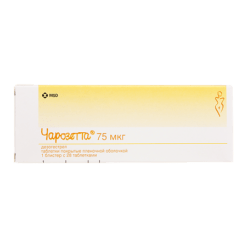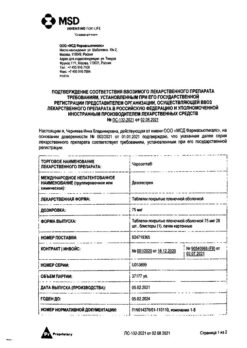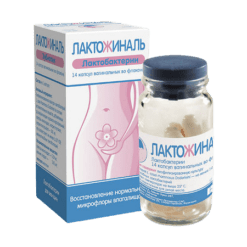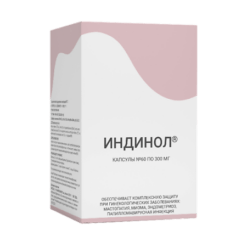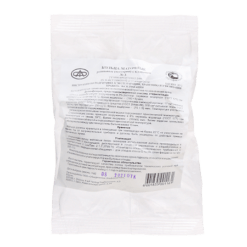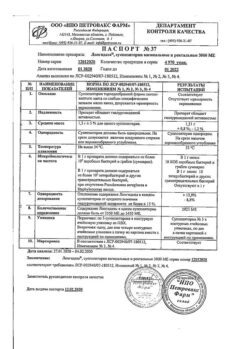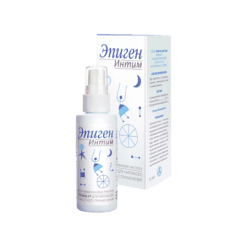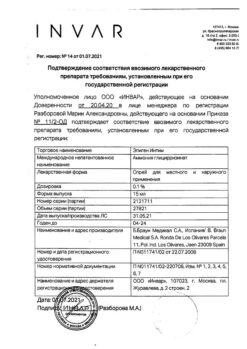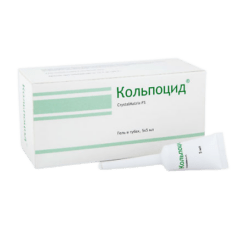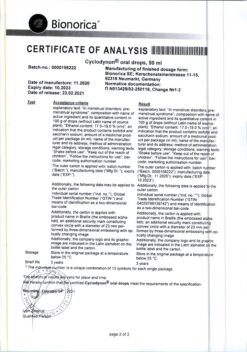No products in the cart.
Charosette, 75 mcg 84 pcs
€113.99 €94.99
EAN: 4601910000461
SKU: 212634
Categories: Contraceptive, Gynecology and Obstetrics, Hormonal, Medicine
Description
Charosette is a gestagen-containing oral contraceptive containing the gestagen desogestrel. Like other gestagen-containing oral contraceptives (“mini-pills”), Charosette is best suited for use while breastfeeding and for women who are contraindicated or who do not want to take estrogens. Unlike the “mini-pill,” Charosette’s contraceptive effects are achieved mainly by suppressing ovulation. Other effects include an increase in cervical mucus viscosity.
When using Charosette for the first 56 days, the rate of ovulation is less than 1%; after discontinuing the 56-day drug, ovulation occurs in 7-30 days (averaging 17 days). In a comparative efficacy study (in which missed pills were allowed for a maximum of 3 hours), the overall Perl index (an index reflecting the frequency of pregnancy in 100 women during a year of contraceptive use) of Charosette was 0.4 in the group of all patients included in the study.
The Perl index of Charosette is comparable to the Perl index of combined oral contraceptives in the general population of oral contraceptive users. Administration of Charosette leads to a decrease in serum estradiol levels to values characteristic of the early follicular phase. No clinically significant changes in carbohydrate, lipid metabolism and hemostasis parameters were found.
Indications
Indications
Contraception.
Pharmacological effect
Pharmacological effect
Charozette is a progestogen-containing oral contraceptive containing the progestogen desogestrel. Like other progestin-containing oral contraceptives (“mini-pills”), Charozette is best suited for use during breastfeeding and for women who are contraindicated or who do not want to take estrogens. Unlike the “mini-pill,” the contraceptive effect of Charozetta is achieved mainly by suppressing ovulation. Other effects include an increase in the viscosity of cervical mucus.
When using the drug Charozetta in the first 56 days, the frequency of ovulation does not exceed 1%; after stopping the 56-day drug intake, ovulation occurs after 7-30 days (on average after 17 days). In a comparative effectiveness study (in which missed pills were allowed to be taken within a maximum of 3 hours), the overall Pearl index (an indicator reflecting the pregnancy rate in 100 women during a year of contraceptive use) of Charozetta was 0.4 in the group of all patients included in the study.
The Pearl Index of Charozette is comparable to the Pearl Index of combined oral contraceptives in the general population taking oral contraceptives. Taking the drug Charozetta leads to a decrease in serum estradiol levels to values characteristic of the early follicular phase. At the same time, no clinically significant changes were detected in carbohydrate, lipid metabolism and hemostasis parameters.
Special instructions
Special instructions
Medical examinations/consultations: before prescribing the drug, a woman should carefully collect anamnesis and conduct a thorough gynecological examination to exclude pregnancy. Before prescribing the drug, the cause of menstrual irregularities, for example, oligomenorrhea and amenorrhea, should be established. The interval between control medical examinations is determined by the doctor in each individual case (the frequency of examinations is at least once a year). If the prescribed drug may affect a latent or existing disease, an appropriate schedule of follow-up medical examinations should be drawn up.
Despite taking Charozetta regularly, irregular bleeding may sometimes occur. If bleeding is very frequent and irregular, you should consider using another method of contraception. If the above symptoms are persistent, then in this case it is necessary to exclude organic pathology. Management of amenorrhea while using the drug depends on whether the tablets were taken as directed and may include a pregnancy test. In case of pregnancy, the drug should be discontinued. In case of acute or chronic liver dysfunction, a woman should contact a specialist for examination and consultation. Women should be informed that Charosette does not protect against HIV infection (AIDS) or other sexually transmitted diseases.
Reduced effectiveness: The effectiveness of progestin-containing oral contraceptives may be reduced if pills are missed, gastrointestinal disorders, or when taking other medications.
Changes in menstrual patterns: While using progestin-containing contraceptives, some women may experience vaginal bleeding more frequently or for a longer period of time, while for other women this bleeding may become less frequent or stop altogether. These changes are often the reason that a woman refuses this method of contraception, or ceases to strictly follow the doctor’s instructions. In detailed consultation with women who decide to start taking Charozetta, the doctor should discuss the possibility of such changes in the nature of the menstrual cycle. Evaluation of vaginal bleeding should be based on clinical presentation and may include testing to rule out malignancy or pregnancy.
Follicular development: When taking all low-dose hormonal contraceptives, follicular development occurs, and occasionally the size of the follicle can reach sizes exceeding those in a normal cycle. In general, these enlarged follicles disappear spontaneously. Often, this occurs without symptoms; in some cases there is mild pain in the lower abdomen. Surgery is rarely required.
Laboratory tests: Data obtained with combined oral contraceptives have shown that the use of hormonal contraceptives may affect the results of some laboratory tests, including biochemical parameters of liver, thyroid, adrenal and kidney function, serum levels of (transport) proteins, such as corticosteroid binding globulin, lipid/lipoprotein fractions, carbohydrate metabolism parameters and blood clotting and fibrinolysis. Usually these changes remain within normal limits. It is not known to what extent this also applies to progestogen-only contraceptives.
Breast cancer: The risk of breast cancer increases with age. While using combined oral contraceptives, the risk that a woman will be diagnosed with breast cancer increases slightly. This increased risk gradually disappears over 10 years after stopping oral contraceptives and is not related to duration of use but depends on the woman’s age at the time of combined oral contraceptive use.
The risk in women using progestogen-only oral contraceptives, such as Charozetta, may be similar to those using combined oral contraceptives. However, the data for progestogen-only oral contraceptives are less clear. Compared with the lifetime risk of breast cancer, the increase in risk associated with combined oral contraceptives is small. Breast cancer diagnosed in women using combined oral contraceptives tends to be less clinically advanced than cancer diagnosed in women who have never used combined oral contraceptives. The increased risk in women using combined oral contraceptives may be due to earlier diagnosis, biological effects of the drug, or a combination of these two factors.
Venous thromboembolism: Epidemiological studies have established an association between the use of combined oral contraceptives and an increased incidence of venous thromboembolism (VTE, deep vein thrombosis and pulmonary embolism). Although the clinical significance of these data for desogestrel, a contraceptive that does not contain an estrogen component, is unknown, the use of Charozetta should be discontinued if thrombosis develops. Discontinuation of Charozetta should be considered in case of prolonged immobilization associated with surgery or illness.
Diabetes mellitus: Although progestins may affect peripheral insulin resistance and glucose tolerance, there is no evidence that there is a need to change the therapeutic regimen in patients with diabetes mellitus using progestogen-containing oral contraceptives. However, women with diabetes should be closely monitored during the first months of using the drug.
Bone Mineral Density: The use of Charozetta leads to a decrease in serum estradiol levels to levels corresponding to the early follicular phase. It is currently unknown whether this decrease has any clinically significant effect on bone mineral density.
Prevention of ectopic pregnancy with traditional gestagen-containing oral contraceptives (“mini-pills”) is not as effective as with combined oral contraceptives, since ovulation often occurs when using “mini-pills.” Although Charozetta effectively suppresses ovulation, in the case of amenorrhea or abdominal pain, ectopic pregnancy should be excluded in the differential diagnosis.
Charozetta contains no more than 65 mg of lactose, so women with rare hereditary disorders associated with galactose intolerance, Lapp lactase deficiency, or glucose-galactose malabsorption should refrain from taking the drug.
Impact on the ability to drive vehicles and operate machinery:
Based on the pharmacodynamic profile, it is believed that the drug does not affect the ability to drive vehicles and operate machinery.
Active ingredient
Active ingredient
Desogestrel
Composition
Composition
1 film-coated tablet contains:
Desogestrel 0.075 mg.
Excipients:
Corn starch;
Povidone;
α-tocopherol;
Stearic acid;
Colloidal silicon dioxide;
Lactose monohydrate.
Shell composition:
Hypromellose;
Macrogol 400;
Talc;
Titanium dioxide
Pregnancy
Pregnancy
During pregnancy, the use of the drug is contraindicated. The results of preclinical studies have shown that very high doses of gestagens can cause masculinization of the female fetus. Extensive epidemiological studies have found neither an increased risk of birth defects in children whose mothers took oral contraceptives before pregnancy, nor a teratogenic effect from unintentional use of oral contraceptives during early pregnancy.
The drug does not affect the quantity or quality (concentration of proteins, lactose or fats) of breast milk. However, small amounts of etonogestrel are excreted in breast milk. As a result, the baby may receive 0.01 – 0.05 mcg of etonogestrel per kg of body weight per day (based on consumption of 150 ml/kg/day of breast milk).
There is limited long-term follow-up data from children whose mothers started taking Charozetta within 4-8 weeks after birth. The duration of breastfeeding was 7 months, and the children were monitored until they reached the age of 1.5 (n=32) or 2.5 years (n=14). Assessment of growth, physical and psychomotor development did not reveal any differences with babies whose mothers used copper intrauterine devices.
Available data suggest that Charozetta can be used during lactation. However, the development and growth of an infant whose mother is using Charozette should be carefully monitored.
Contraindications
Contraindications
Hypersensitivity to the active substance or any excipient of the drug.
Established or suspected pregnancy.
The presence or history of venous thromboembolism (including deep vein thrombosis of the leg, pulmonary embolism).
Current or past history of severe liver disease (until liver function tests return to normal).
Liver failure, incl. in the anamnesis.
Established or suspected malignant hormone-dependent tumors.
Bleeding from the vagina of unknown etiology.
Lactose intolerance, lactase deficiency, glucose-galactose malabsorption.
With caution
If any of the conditions/risk factors listed below are present, the benefits of using a progestin should be weighed against the possible risks for each individual woman. This should be discussed with the woman before she decides to start taking the drug. If the disease worsens, worsens, or any of these conditions occur for the first time, a woman should consult a doctor. The doctor should decide on the advisability of further use of the drug Charozetta):
Persistent hypertension that develops while taking the drug Charozetta, or when antihypertensive therapy is ineffective.
Thromboembolic disorders, including a history: the woman should be warned about the possibility of relapse.
Prolonged immobilization associated with surgery or illness.
Since it is impossible to exclude the biological effect of gestagens on the development of liver cancer, an individual assessment of the benefit-risk ratio should be carried out when prescribing the drug to women with liver cancer.
Chloasma, especially in women with a history of chloasma during pregnancy: Women with a predisposition to chloasma should avoid exposure to sunlight or ultraviolet radiation while using Charozetta.
Side Effects
Side Effects
The most common adverse effect reported in clinical studies was irregular menstruation. Up to 50% of women using desogestrel experienced acyclic bleeding: in 20–30% of women, menstruation becomes more frequent, while in another 20% it becomes less frequent or may even stop completely. Menstruation may also become longer.
After several months of taking the drug, menstruation tends to become less frequent. Informing the doctor, monitoring by the doctor, and using a menstrual diary can increase compliance with drug treatment.
The following are undesirable effects that have an established, probable or possible connection with the use of the drug.
If any of the following conditions/risk factors are observed, the expected benefits and risks of using contraception should be carefully weighed in consultation with your doctor throughout the entire period of contraception. If any of the following conditions/risk factors appear, intensify, or change, the patient should immediately consult a doctor to decide on the possibility of further use of the drug.
Often – acne, nausea, mood changes, decreased libido, breast tenderness, menstrual irregularities, headache, weight gain.
Uncommon: alopecia, fatigue, vomiting, discomfort when wearing contact lenses, vaginitis, dysmenorrhea, ovarian cysts.
Rarely – redness of the skin, rash, urticaria, erythema nodosum.
Although a reliable connection with the intake of gestagens has not been established, when taking them, cholestatic jaundice, skin itching, cholelithiasis, chorea, herpes of pregnant women, otosclerosis, deafness, and the development of hemolytic-uremic syndrome are possible.
Interaction
Interaction
Interactions between oral contraceptives and other drugs may result in breakthrough bleeding and/or decreased contraceptive effectiveness. The following interactions have been reported in the literature (mainly with combined contraceptives, but sometimes also reported with progestin-containing contraceptives).
Hepatic metabolism: interactions may occur with drugs that induce microsomal enzymes, resulting in increased clearance of sex hormones (eg, hydantoins (eg, phenytoin), barbiturates (eg, phenobarbital), primidone, carbamazepine, rifampicin; and probably also oxcarbazepine, rifabutin, topiramate, felbamate, ritonavir, nelfinavir, griseofulvin and preparations containing St. John’s wort (Hypericum perforatum)).
Women using any of these medications should temporarily use a barrier method in addition to Charozetta or choose another method of contraception. A barrier method of contraception should be used while using these medications and for 28 days after stopping them. For women receiving long-term treatment with liver enzyme inducers, the use of a non-hormonal method of contraception should be considered.
When using activated charcoal, the absorption of desogestrel contained in the tablet may be reduced and, therefore, contraceptive effectiveness may be reduced. In this case, you should act in accordance with the recommendations regarding missed pills.
Hormonal contraceptives may affect the metabolism of other drugs. Accordingly, drug concentrations in plasma and tissues can either increase (for example, cyclosporine) or decrease.
To identify possible interactions, you should read the instructions for use of these medications.
Overdose
Overdose
There are no reports of any serious complications following an overdose of Charosette.
Possible: nausea, vomiting, in young girls – slight vaginal bleeding.
Treatment: There is no specific antidote, and further treatment should be symptomatic.
Storage conditions
Storage conditions
Store in a dry place, protected from light, at a temperature of 2°C to 30°C.
Shelf life
Shelf life
3 years.
Manufacturer
Manufacturer
N.V.Organon, Netherlands
Additional information
| Shelf life | 3 years. |
|---|---|
| Conditions of storage | Store in a dry, light-protected place at 2°C to 30°C. |
| Manufacturer | N.W. Organon, The Netherlands |
| Medication form | pills |
| Brand | N.W. Organon |
Other forms…
Related products
Gynecology and Obstetrics
Buy Charosette, 75 mcg 84 pcs with delivery to USA, UK, Europe and over 120 other countries.


